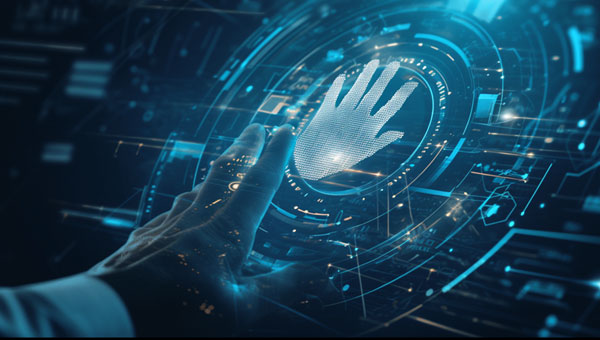Biometric Technology
Biometric technology, encompassing methods like fingerprint, facial, iris, and palm recognition, is revolutionizing security and identification with enhanced accuracy, convenience, and reliability across various sectors.
Biometric technology is revolutionizing the way we approach security and identification in the digital age. By leveraging unique physiological and behavioral characteristics of individuals, biometric systems provide a highly secure and efficient means of verifying identities. This technology encompasses various methods, including fingerprint recognition, facial recognition, iris scanning, and the increasingly popular palm print and vein recognition. As biometric technology continues to advance, it is becoming integral to numerous sectors, enhancing security and user experience across the board.

Key Types of Biometric Technology:
Fingerprint Recognition: One of the earliest and most widely adopted forms of biometric identification, fingerprint recognition analyzes the unique patterns of ridges and valleys on an individual's fingertips. It is commonly used in smartphones, access control systems, and time attendance systems.
Facial Recognition: This technology captures and analyzes facial features to create a unique biometric template. Facial recognition is prevalent in mobile devices, surveillance systems, and airport security, offering a contactless and user-friendly authentication method.
Iris Scanning: By examining the unique patterns in the colored ring around the pupil, iris scanning provides highly accurate identification. It is used in high-security environments, such as government facilities and border control.
Palm Print and Vein Recognition: An emerging biometric method, palm print and vein recognition analyze the unique patterns on the surface and beneath the skin of the palm. This method is gaining traction due to its high security and reliability, with applications in financial services, healthcare, and secure access control.
Advantages of Biometric Technology:
Enhanced Security: Biometric identifiers are unique to each individual and difficult to replicate, providing a high level of security. This reduces the risk of identity theft and unauthorized access.
Convenience and Efficiency: Biometric authentication eliminates the need for passwords and PINs, streamlining the user experience. Users can quickly and easily verify their identities with minimal effort.
Accuracy and Reliability: Advanced biometric systems use sophisticated algorithms to ensure high accuracy and reliability, reducing the likelihood of false positives and negatives.
Scalability: Biometric technology can be scaled to meet the needs of various applications, from small businesses to large enterprises, making it a versatile solution for identity verification.
Applications of Biometric Technology:
Financial Services: Biometric authentication secures online banking, ATM transactions, and mobile payments, protecting against fraud and unauthorized access.
Healthcare: Ensuring accurate patient identification and secure access to medical records, biometric technology enhances patient safety and data security in healthcare settings.
Government and Law Enforcement: Used in border control, criminal identification, and secure facility access, biometrics improve security and streamline operations in government and law enforcement.
Corporate Security: Biometric systems provide secure access control to offices, data centers, and other sensitive areas, safeguarding corporate assets and information.
Consumer Electronics: From smartphones to laptops, biometric authentication enhances the security and usability of consumer electronic devices.
The Future of Biometric Technology:
As technology continues to evolve, biometric systems are expected to become even more advanced and ubiquitous. Innovations such as multi-modal biometrics, which combine multiple biometric methods, and artificial intelligence-driven enhancements will further improve the accuracy, security, and convenience of biometric technology. Additionally, the integration of biometric systems with blockchain technology holds promise for creating more secure and tamper-proof identity verification solutions.
In conclusion, biometric technology is transforming the landscape of security and identification, offering unparalleled benefits in terms of security, convenience, and reliability. As the adoption of biometric systems continues to grow, it will play a critical role in safeguarding identities and enhancing user experiences across various sectors. For organizations and individuals seeking to enhance their security measures, biometric technology offers a powerful and forward-looking solution.
This article provides a comprehensive overview of biometric technology, highlighting its key types, advantages, applications, and future trends in the field of security and identification.










